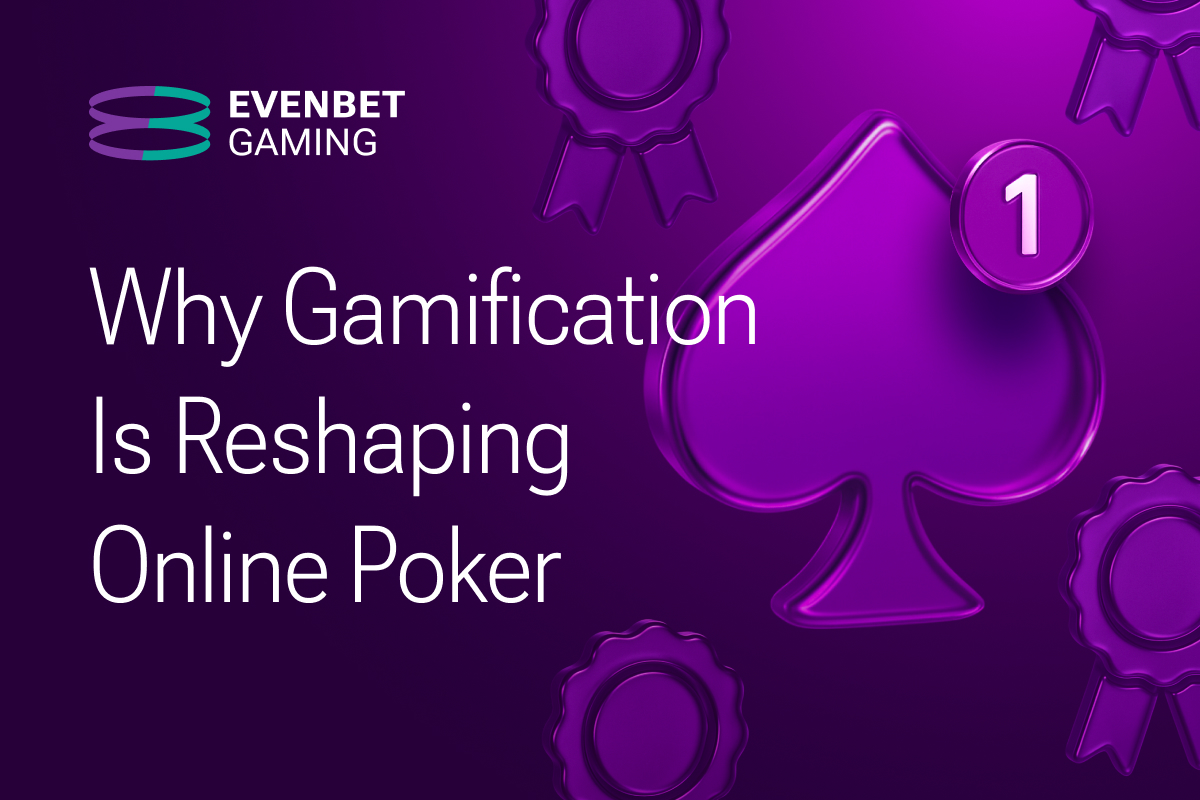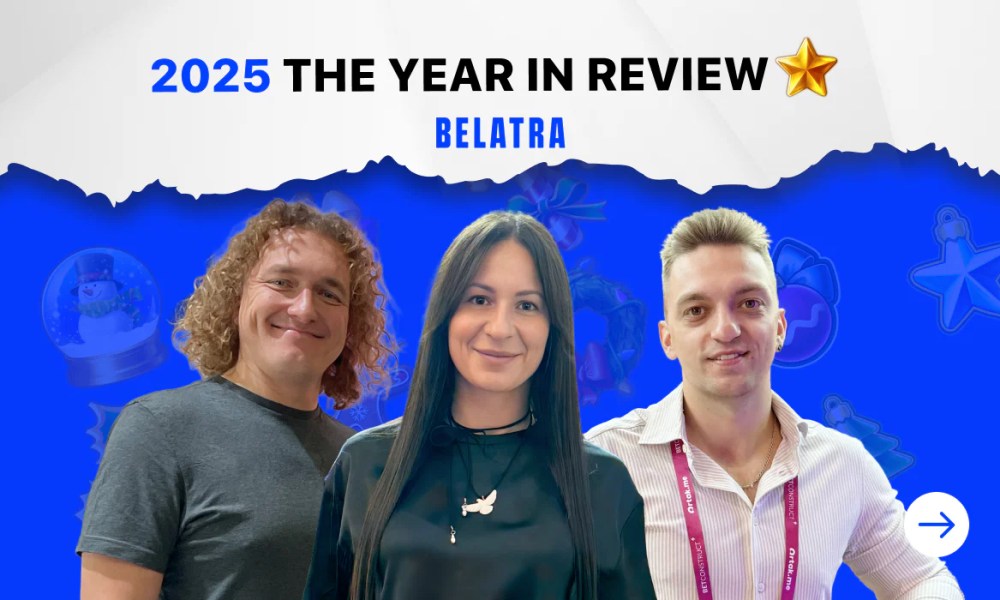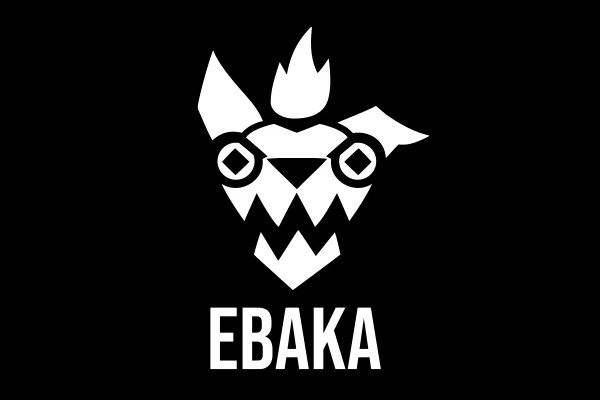Latest News
Why Gamification Is Reshaping Online Poker

Reading Time: 5 minutes
Online poker’s not the sleepy mix of static cash tables and rinse-repeat tourney grids it used to be. Business Wire predicts that by 2030, the market will hit $11.4 billion, fuelled by cross-platform play and new competitive formats. But here’s the catch: growth brings noise. And in 2025, grabbing attention is only half the game — keeping it has become just as critical. And we all know that retention is the table you can’t afford to fold.
Over the recent years, gamification has turned into one of poker’s strongest retention plays. When it’s done right, it keeps players around, sparks repeat visits, and forges loyalty. They come back tomorrow, next week, next month — and your competitors can’t pry them away. The idea sounds simple enough — weave in game-style mechanics to make poker richer and more engaging, without killing the skill game underneath.
EvenBet Gaming’s research breaks it into three targets:
- Give players more reasons to return.
- Make onboarding smooth and rewarding.
- Build loyalty with experiences that feel personal, competitive, and worth bragging about.
Churn burns profit. Gamification done right is an infrastructure that breeds loyalty. Done wrong? You’re just another site with flashing badges that no one cares about.
Gamification, Not Gamblification
Before diving into mechanics, it is important to set one thing straight. Gamification boosts engagement — leaderboards that show you who’s climbing, missions that push you to try new formats, achievement badges you actually want to unlock. It challenges players, rewards skill, and deepens the game. “Gamblification” is where it all turns sour. That’s when mechanics push for profit at the expense of player wellbeing — pressure-loop rewards, unclear payout systems, anything designed to keep people clicking long after the fun’s gone. These tactics can backfire, invite regulatory attention, and eat away at players’ trust.
Gamification should make the player-platform bond stronger. It’s open, skill-focused, and it stays within responsible-gaming boundaries. Otherwise, you’re just playing short-term roulette with your long-term survival.
Core Gamification Mechanics in Poker
Here’s the thing — gamification works best when it’s layered, not just thrown on top of the existing game. You’ve still got poker at the centre, but now there’s more to play for. EvenBet Gaming’s toolkit has a bit of everything, with a mix of proven features that operators need to keep players active and returning.
Leaderboards
People like to see where they stand, and a good leaderboard hits that primal “beat the other guy” instinct. Doesn’t matter if it’s hands played, rake pulled, or weird challenges only five people care about. Timeframes can be daily, weekly, or monthly, ensuring fresh challenges and preventing leaderboard fatigue. Players stick around to climb, rivals get personal, and your community gets tighter.
To avoid burnout and excessive gamblification, EvenBet’s customer success department doesn’t recommend creating only leaderboards based on pure game volume. As a flexible tool, leaderboards have a better use for boosting attention to specific game or tournament types (for example, hands played in 5-card Omaha), creating targeted demand.
Missions, Quests, and Challenges
Give a player a target and they’ll chase it. Win with pocket sevens, log 50 games, or try that Sunday knockout tourney — whatever keeps them moving. Segment it: beginners get gentle ramps; grinders chase big targets. Toss in tickets, cash, or even just brag-worthy status bumps — and suddenly, casual play has a storyline. This meta-layer adds structure to casual play, nudging players into consistent engagement.
“Different mission types work specifically on various segments of a poker room audience”, explains Nikita Golodaev, Business Account Manager at EvenBet Gaming. “For example, guided missions targeted to explore poker room features and game types keep new players on the platform and decrease early churn. Soft streaks (3-5 days) encourage regular sessions without burnout”.
Achievements and Badges
First win, first deep run, first time they actually fold kings preflop — badges give players proof they’re climbing. Badges make progress visible, they’re milestones and conversation starters. This visual recognition encourages players to develop their skills and makes long-term goals more tangible.
Progressive Systems
Experience points (XP) and rakeback have always been staples in poker loyalty systems. They’re poker loyalty basics. EvenBet’s Progressive Rakeback with a tiered, time-limited structure turns the game into a race — 6 tiers from Aluminium all the way up to Platinum. Every tier gives you a little more, but fall behind — and you drop. The gamified progression adds urgency, encouraging regular play to maintain or advance the level.
According to Nikita Golodaev, clear and balanced progressive systems work best for projects with an existing core of regular mid-core players: they are already investing significant time into the game and are still tempted by rewards provided in the progressive tracks, unlike VIP and high-stakes players who are more interested in recognition of their status.
Put it together, and you’ve got a cycle: play, check your rank, tick missions, unlock the badge, check the board, eye the next tier. And then do it again tomorrow. It’s sustained engagement without sacrificing poker’s competitive core.
Advanced Applications — Tournaments and Hybrid Formats
Think of tournaments not as one-off events, but as frameworks. They aren’t just a product — they’re an engagement machine. You can hang all sorts of engagement hooks on them — the kind that keep players checking in and keep them motivated from registration to the final hand. Layer in gamification, and you have a retention funnel operators dream about.
Formats with a Twist
EvenBet’s flexible setup allows operators to launch virtually any format: high-GTD marathons, Spin&Go sprints with random multipliers, quick-fire Sit & Gos for casuals, and velvet-rope VIP tables for the whales. Add Mystery Bounty, Progressive Knockout, or Multi-flight qualifiers, and you’ve got unpredictability on tap. Which means the game always stays interesting.
Linking Tournaments to Gamification Layers
Hybrid play is where tournaments meet missions, leaderboards, and badges:
- “Climb the Ladder” challenges that pay points for each event played.
- Leaderboards stretching over weeks and sparking long grinds.
- Achievements for milestones like “Final Table Three Times in a Week” or “Knock Out 10 Players in a PKO.”
This crossover keeps casual players chasing goals and competitive players grinding for prestige — all while strengthening retention loops. When you nail it, tournaments become recurring, gamified events that handle acquisition, retention, and loyalty in one package.
Why It Works for Operators
Gamification in online poker is not just a UX add-on — it moves numbers if done properly.
- Retention and monetisation: longer sessions, more logins, bigger rake, and better LTV. Plus, new players convert faster when there’s a mission to chase.
- Skill development: challenges teach strategy, confidence, and adaptability without feeling like homework.
- Audience segmentation: freerolls for newbies, high-stakes bounties for veterans. You serve each player just the right challenge without losing focus.
Risks and Implementation Challenges
Gamification’s upside is clear — but mess it up, and it quickly becomes a liability. When these risks are managed, gamification pays off big time. Treat it with respect and care like a strategy, not a shortcut or gimmick.
Over-Gamification
Stack too many overlapping mechanics, and the gaming experience turns into a mess. Players get overwhelmed, quit the game altogether, or even fall into unhealthy patterns. The balance is in adding enough variety to motivate, without creating constant pressure to act. It’s a fine line between motivation and overload.
Regulatory Compliance
Operating inside responsible gaming guidelines is a must. Rewards should be transparent, achievable, and not designed to exploit compulsive tendencies. As noted by Dmitry Starostenkov, regulators are increasingly wary of features that blur the lines between skill-building and pushing players too hard.
Technical Complexity
Integration has to be smooth. If missions lag, leaderboards glitch, progression breaks, or interfere with core poker gameplay, this erodes trust. EvenBet’s modular system gives control, but operators still need rigorous testing, UX tweaks, and performance checks.
Building Gamification That Lasts
When done right, gamification in online poker isn’t just bells and whistles. It’s a full-on retention driver. Mix leaderboards, missions, badges, and tiered rewards right into the core game, and you create a cycle that hooks players, grows skill, and boosts revenue.
The winning formula is balance: enough variety to keep things fresh. Clarity so players aren’t guessing. Responsibility so the game stays ethical. Data-driven personalisation ensures that every segment — from first-timers to VIP grinders — finds a reason to return.
Our research at EvenBet Gaming is clear: sustainable gamification is a long game. Set measurable goals and transparent rewards, enhance the poker spirit — never overshadow it. Attention is the rarest currency these days. Platforms that get this balance don’t just hold players — they win the loyalty battle.
The post Why Gamification Is Reshaping Online Poker appeared first on European Gaming Industry News.
Belatra Games
From ‘Mummyverse’ to Crash Games: Belatra Reviews a Landmark 2025

Editor’s Take
Why this matters: Belatra has been a steady hand in the slots world for a long time, but 2025 marked a distinct shift in strategy. By entering the Crash vertical with Goose Boom Bang and winning big at SiGMA Africa, the studio is clearly pivoting to capture the high-growth, high-frequency players in emerging markets. They are no longer just a “classic slots” developer; they are diversifying the portfolio to ensure relevance in regions like LatAm and Africa.
The Full Story
Belatra Games, the specialist online slots developer, has issued a strategic review of its 2025 operations, celebrating a 12-month period defined by entry into new game verticals, significant franchise expansion, and high-profile industry recognition.
The year was characterized by a dual strategy: deepening engagement in established markets while aggressively expanding its content portfolio to suit local preferences in emerging territories.
Portfolio Evolution: Crash and Battles 2025 saw Belatra move beyond its traditional slot roots. The company made its debut in the high-demand Crash game vertical with the launch of Goose Boom Bang, a title designed to tap into the fast-paced gameplay preference of younger demographics.
Additionally, the studio introduced a fresh game concept with the launch of Battles, a new format unveiled for the first time in 2025, with further development planned for 2026.
The ‘Mummyverse’ Expands For fans of classic slots, the highlight of the year was the aggressive expansion of the Mummyverse. Belatra nearly doubled the size of this franchise over the year, making it the most extensive game universe in their entire catalog.
The developer also focused on B2B localization, releasing a number of exclusive bespoke games created specifically for selected operator partners to meet specific local market tastes.
Awards and Recognition The company’s strategic shifts were validated by industry accolades. Belatra secured over 30 nominations throughout the year, with standout wins including:
-
Best Slot Provider (awarded by BitStarz).
-
Most Played Game of 2025 for Make It Gold at the SiGMA Africa Awards.
-
Player’s Pick Award.
Management Commentary Misha Voinich, Head of Business Development at Belatra, commented on the studio’s momentum:
“This year has truly defined who we are as a studio – ambitious, creative and focused on building long-term partnerships. We’ve expanded our universes, launched new ones and entered exciting new markets that will all help us carry this momentum into the New Year.”
The post From ‘Mummyverse’ to Crash Games: Belatra Reviews a Landmark 2025 appeared first on Gaming and Gambling Industry Newsroom.
BMM Testlabs
‘Chaos and Soul’: Ebaka Games Plots Global Expansion After Viral Launch

Editor’s Take
Why this matters: The “Instant Game” vertical (Crash, Plinko, Mines) is becoming crowded, but Ebaka Games is cutting through the noise with a distinct brand personality. By securing BMM Testlabs certification so quickly after launch, they are signaling to Tier 1 operators that despite their “chaotic” marketing vibe, the math underneath is solid and compliant. The backing of industry veteran Dmitry Belianin also adds immediate commercial credibility to the startup.
The Full Story
Ebaka Games, the fledgling studio that promises to bring “chaos and soul” to the iGaming sector, has outlined an aggressive growth strategy for 2026 following a landmark launch period in late 2025.
The studio, which officially debuted in November, reports that its initial rollout reached more than five million people worldwide. The launch saw its portfolio go live with the operator Menace, serving as the initial testbed for its mechanics and “Ebaka modes.”
The Product: Instant Games with Personality Ebaka is bypassing traditional slots to focus on the high-growth vertical of fast-paced, instant-win games. Their initial lineup includes:
-
Plinko
-
Mines
-
Tower
-
Limbo
-
Crash
Differentiation is achieved through unique mascots and signature gameplay tweaks designed to offer high win potential and distinct visual identities, moving away from the generic interfaces often found in this genre.
Regulatory Milestone Crucially for its 2026 roadmap, Ebaka Games has confirmed it has secured certification from BMM Testlabs. This accreditation validates the fairness and integrity of its RNG (Random Number Generator) and game engines, removing a major barrier to entry for regulated markets. With this certification in hand, the studio plans to launch with a number of “major brands” in the coming year.
Management Commentary Vitalii Zalievskyi, CEO of Ebaka Games, commented on the studio’s unorthodox approach:
“It’s only been a few weeks since we first introduced Ebaka Games to the world. The feedback has been breathtaking, and it vindicates the decision for us to take a different path to the rest of the industry. You don’t need huge marketing budgets to grab people’s attention if you are building something truly innovative.”
Industry Backing The studio describes itself as being “created by players for players” but boasts significant industry firepower in its corner. The team includes Dmitry Belianin, a well-known figure in the sector who is the co-founder of Blask and Menace, as well as Managing Partner at Already Media.
The post ‘Chaos and Soul’: Ebaka Games Plots Global Expansion After Viral Launch appeared first on Gaming and Gambling Industry Newsroom.
ARC
Racing Meets Nightlife: SBK Backs ARC’s New ‘Friday Night Live’ Series

Editor’s Take
Why this matters: British racing has a well-documented demographic problem; its core audience is aging. “Friday Night Live” is a direct attempt to fix this by blending high-stakes racing with the “experience economy” (DJs, nightlife vibes) that appeals to Gen Z and Millennials. Bringing SBK on board—a mobile-first, app-only sportsbook—is a perfect demographic fit, while the Racing Post adds the necessary credibility to ensure the actual racing product remains the focus.
The Full Story
Arena Racing Company (ARC) has unveiled the strategic commercial lineup for its upcoming Friday Night Live series, confirming SBK as the Exclusive Betting Partner and The Racing Post as the Official Media Partner.
Set to launch in January 2026, Friday Night Live is a new initiative created in collaboration with youth-focused events company INVADES. The series is designed to overhaul the traditional race day experience, featuring fast-paced fixtures under floodlights, DJ sets, and significant entertainment elements sandwiched between races.
The Commercial Deal
-
SBK: As the exclusive betting partner, the Smarkets-owned sportsbook will take naming rights and on-course branding for all 35 races. Crucially, these races will be broadcast live on mainstream television via ITV Racing as well as Sky Sports Research.
-
The Racing Post: As the Official Media Partner, the publication will provide content, coverage, and promotion across its digital platforms, aiming to bridge the gap between established racing purists and the new audience ARC hopes to attract.
A High-Stakes Experiment The series is not just a marketing exercise; it carries serious sporting weight. Each of the five scheduled nights will feature over £200,000 in prize money. The fixtures will rotate across three of ARC’s all-weather tracks: Wolverhampton, Newcastle, and Southwell.
Management Commentary David Leyden Dunbar, Group Director of Commercial Strategy at ARC, was clear about the target audience:
“We have been very clear that one of the aims of Friday Night Live is to engage the next generation of racing fans… Both [partners] have shown real enthusiasm to work with us… as well as using the platform that these fixtures will offer them to also engage with more established racing and sports fans.”
Adam Baylis, Marketing Director at SBK, added:
“Friday Night Live [is] a fresh and engaging concept that brings a new energy to British racing. SBK has always been built around sport… our focus is on enhancing the live race day experience in a fun, social and responsible way.”
The 2026 Schedule The series kicks off immediately in the new year:
-
9th Jan: Wolverhampton
-
6th Feb: Newcastle
-
20th Feb: Southwell
-
20th March: Wolverhampton
-
27th March: Newcastle
The post Racing Meets Nightlife: SBK Backs ARC’s New ‘Friday Night Live’ Series appeared first on Gaming and Gambling Industry Newsroom.



